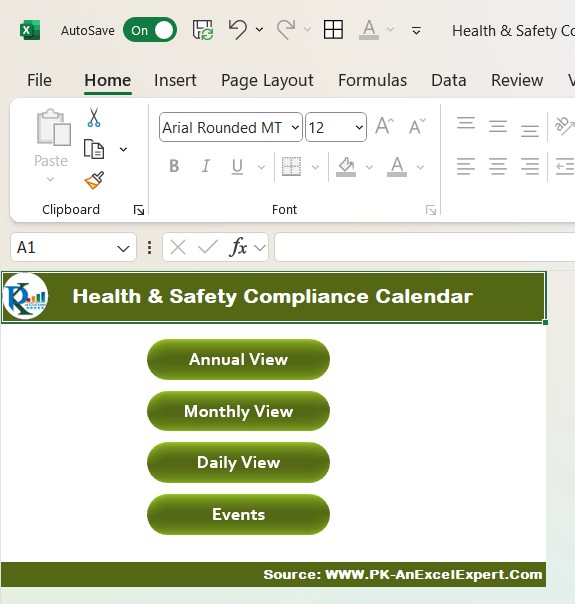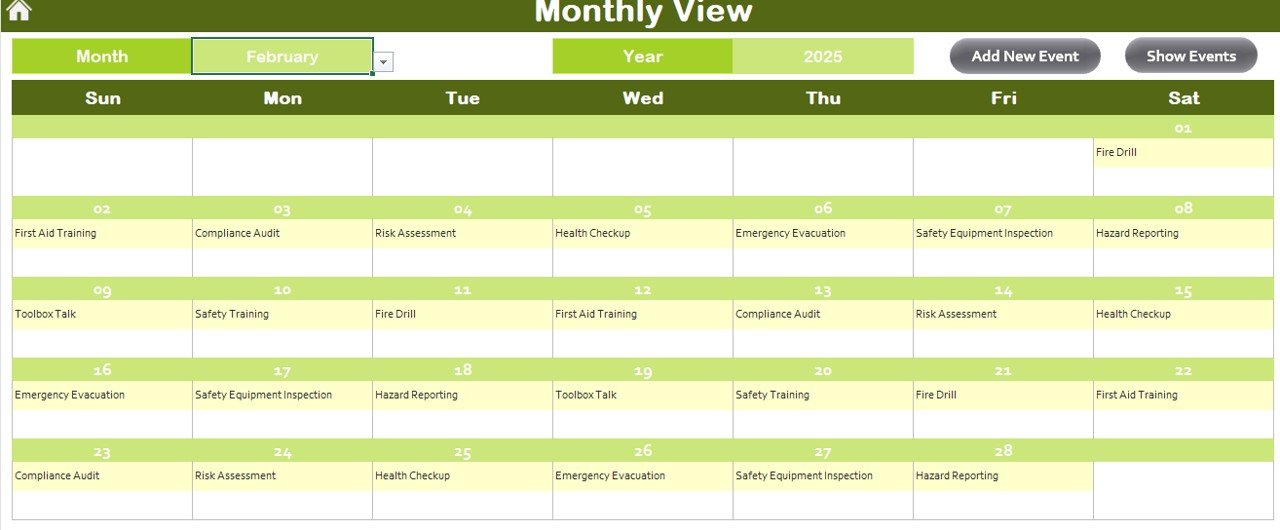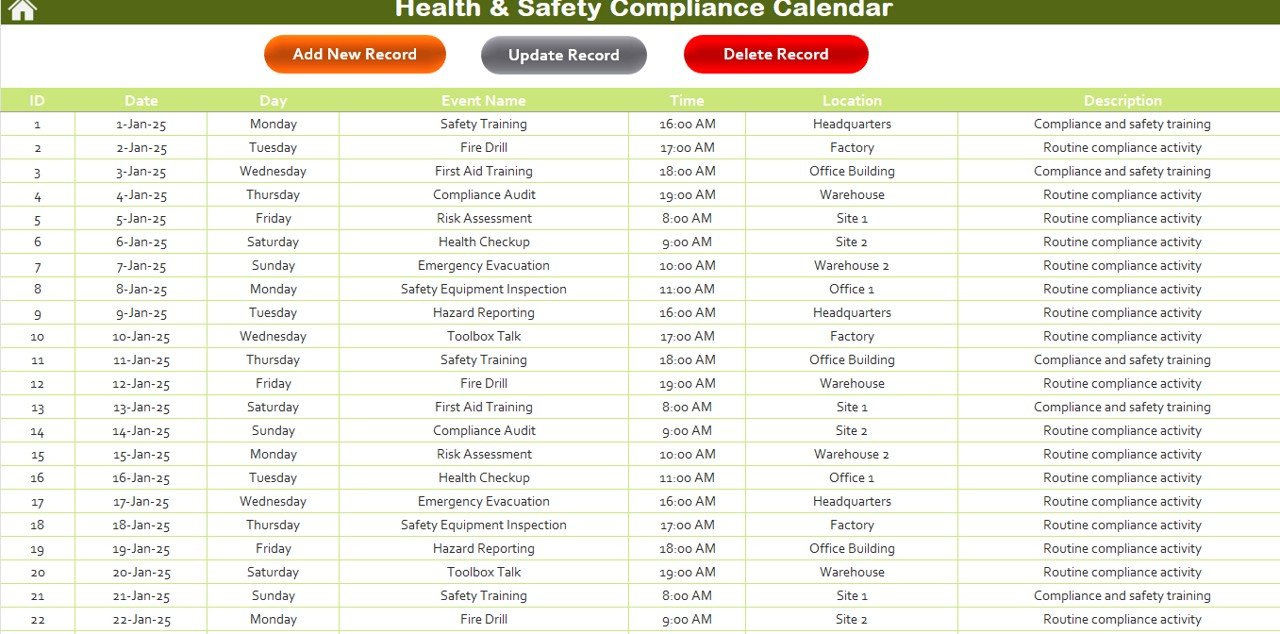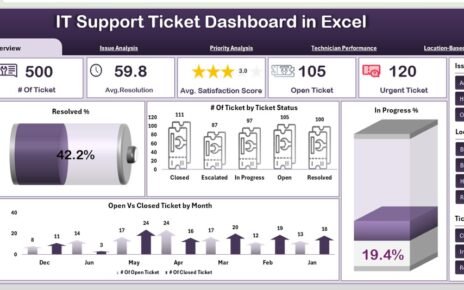Maintaining health and safety compliance is vital for businesses, ensuring a safe environment for employees while adhering to regulations. Managing this can often become complex, especially when tracking various events, deadlines, and regulations. The Health & Safety Compliance Calendar in Excel is the perfect solution to simplify this process. This ready-to-use tool helps you organize compliance activities, ensuring that no deadline or critical event is overlooked. In this article, we will walk you through the key features, advantages, and best practices for using this calendar to stay compliant and organized.
Key Features of the Health & Safety Compliance Calendar in Excel
The Health & Safety Compliance Calendar in Excel offers a variety of useful features that make it an essential tool for compliance management. Let’s take a detailed look at these features:
1. Home Sheet Tab
The Home Sheet acts as the central hub for your calendar, providing quick access to the other sections. Here’s what you can find:
- Annual View Button: Navigate directly to the full-year calendar to see your events for the entire year.
- Monthly View Button: View your calendar by month to get a more detailed look at upcoming events.
- Daily View Button: Access the daily event view for precise tracking of events by day.
- Events Button: This button takes you to the list of events, ensuring that you never miss a compliance task.

2. Annual View Sheet Tab
The Annual View Sheet gives you an overview of the year’s compliance events, with several features to enhance usability:
Control Panel: This section allows you to customize the calendar:
- Year Selector: Change the year displayed on the calendar to keep it up-to-date.
- Starting Month: Adjust the starting month to align with your fiscal or operational year.
- Day of the Week: Select the starting day of the week (e.g., Sunday or Monday).

Theme Change: Choose from five color themes to apply a consistent look across your workbook.
Highlighting Options: Highlight specific days, such as weekends or critical event days, for better visibility. You can also choose to highlight events in yellow for easy identification.
Event Management: The Add New Event Button allows you to add events directly to the calendar. Simply select a date and fill in the event details.
3. Monthly View Sheet Tab
The Monthly View Sheet allows you to track events for a specific month. Features include:
- Event Display: Each date will show any scheduled events. If there are multiple events on a date, it will display “more than 1…”.
- Add New Event Button: You can add events directly to any selected day by clicking this button and filling out the event form.
- Show Event Button: View all events for a particular date to ensure you stay on top of your schedule.

4. Daily View Sheet Tab
The Daily View Sheet is designed to display a detailed list of events for a selected date range. Features include:
- Date Range Selection: Select your start and end dates using the calendar icon to track events for the chosen range.
- Refresh Button: Click on this to update the list with the latest events based on your selected date range.
- Add New Event Button: Similar to other views, you can add new events directly from this page.

5. Events Sheet Tab
This sheet serves as the database for all your events. It holds key information such as:

Event Details: Store important data such as event ID, date, day, event name, time, location, and a short description.



